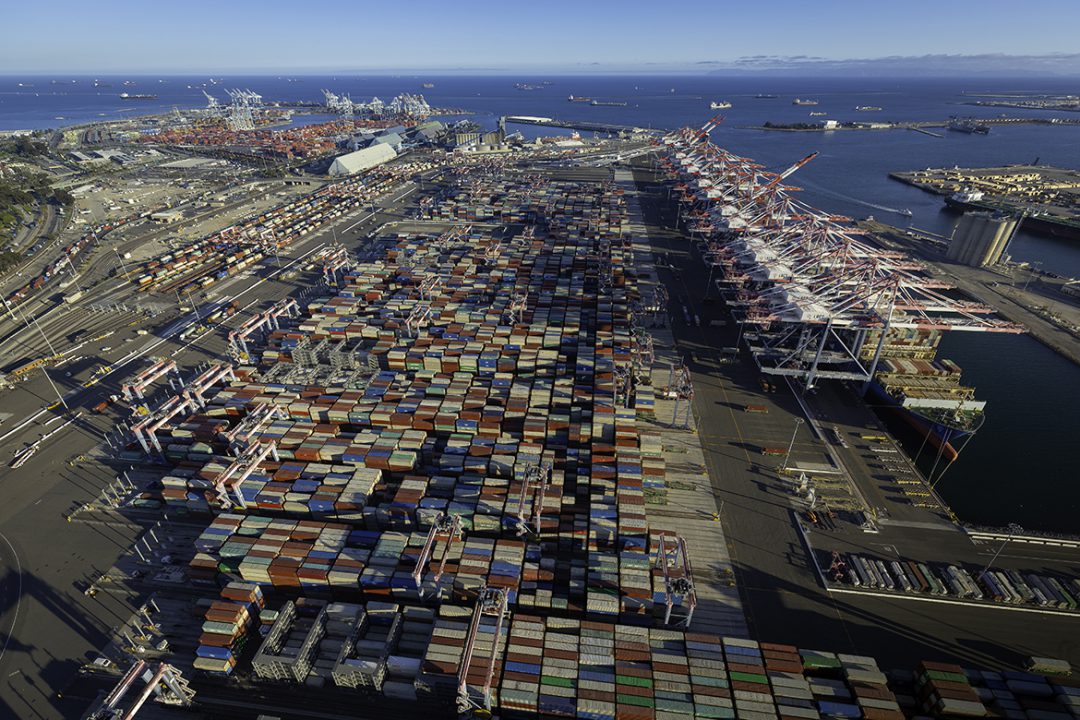The Port of Long Beach set a new record in 2021 by moving 9.38 million cargo containers as dockworkers and terminal operators worked to clear the docks amid an historic, pandemic-induced import surge.
The Port ended 2021 with 9,384,368 twenty-foot equivalent units processed, a 15.7% increase from the previous record of more than 8.11 million TEUs moved in 2020. Imports jumped 14.6% to 4,581,846 TEUs and exports declined 2.6% to 1,437,916 TEUs compared to last year. Empty containers moving through the Port were up 27.5% to 3,364,606 TEUs.
“This incredible milestone was achieved by the skilled workers who keep goods moving through the supply chain as we continue to seek solutions to improve efficiency, attract business and build for the future,” said Port of Long Beach Executive Director Mario Cordero. “I look forward to enhancing productivity in 2022 by advancing our move toward 24-7 terminal operations, deploying data-sharing technologies for our industry partners, and continuing our infrastructure improvements.”
“The ongoing collaboration with our labor force and industry partners lifted us to this extraordinary record during a challenging time,” said Steven Neal, President of the Long Beach Board of Harbor Commissioners. “We anticipate further collaboration in 2022 as we work toward developing immediate and long-term solutions that will alleviate congestion at our Port complex.”
The significant increase in cargo was driven by evolving consumer spending habits during the COVID-19 pandemic, when demand for vacations, dining out and entertainment declined due to health precautions and pivoted toward home office supplies, furniture and exercise equipment.
The Port of Long Beach had 980 container vessel calls in 2021, down from 1,042 a year earlier due to the elimination of “dual calls” for some shipping services that moved up and down the West Coast.
The Port collaborated with stakeholders at the local, state and federal levels to enhance cargo movements, including: expanding hours of operation; creating temporary staging areas for full containers; and encouraging truck drivers to drop off export containers when picking up an import.
The Port has delayed consideration of a “Container Dwell Fee” that would charge ocean carriers for cargo containers that remain too long on the docks. Since the program was announced on Oct. 25, the Long Beach and Los Angeles ports have seen a combined decline of 55% in aging cargo on the docks.
The strong economic momentum experienced through 2021 hit a speed bump by year’s end due to the rampant spread of the Omicron variant of COVID-19.
Trade was down 7.5% in December compared to the same period in 2020 with 754,314 cargo container units moved. Imports declined 11.7% to 358,687 TEUs. Exports dropped 13.9% to 113,918 TEUs, while empty containers climbed 1.5% to 281,709 TEUs.

























